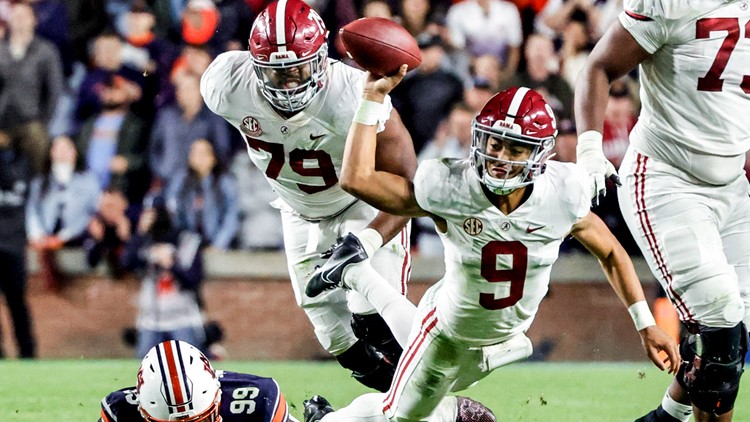Heart rates were tested this rivalry week in college football. So much so that No. 3 Alabama needed four overtime periods to withstand the Auburn Tigers in the 2021 Iron Bowl.
Alabama's 24-22 comeback came with much suspense as the Crimson Tide had nothing on the board until the fourth quarter.
The Iron Bowl match-up even gave college football fans a good view of a couple of adapted 2021 OT rules.
In 2021, the NCAA changed a rule to require a 2-point conversion play after a touchdown when a game reaches a second overtime period. In the past, a 2-point attempt wasn't required until the third OT.
In addition, the NCAA added a change to the third OT session in 2021. In the event of a third OT, teams run alternating 2-point plays versus starting the drive at the other team's 25-yard line to make it down the field for a touchdown or field goal. Previously, 2-point plays didn't begin until the fifth OT period.
Other than those two changes, NCAA OT is pretty much the same as years passed.
A game goes into overtime when it ends in a tie at the end of the fourth quarter. Team captains call heads or tails and the winner can decide to play offense or defense, or which end of the field will be used for both possession of that overtime period.
Each team receives one timeout for one overtime period and previous leftover timeouts from regular game time can not rollover.
Each team retains the ball until it scores or fails to make it to a first down. Sounds easy enough right?
Maybe not, as it took Alabama and Auburn four OT periods.



